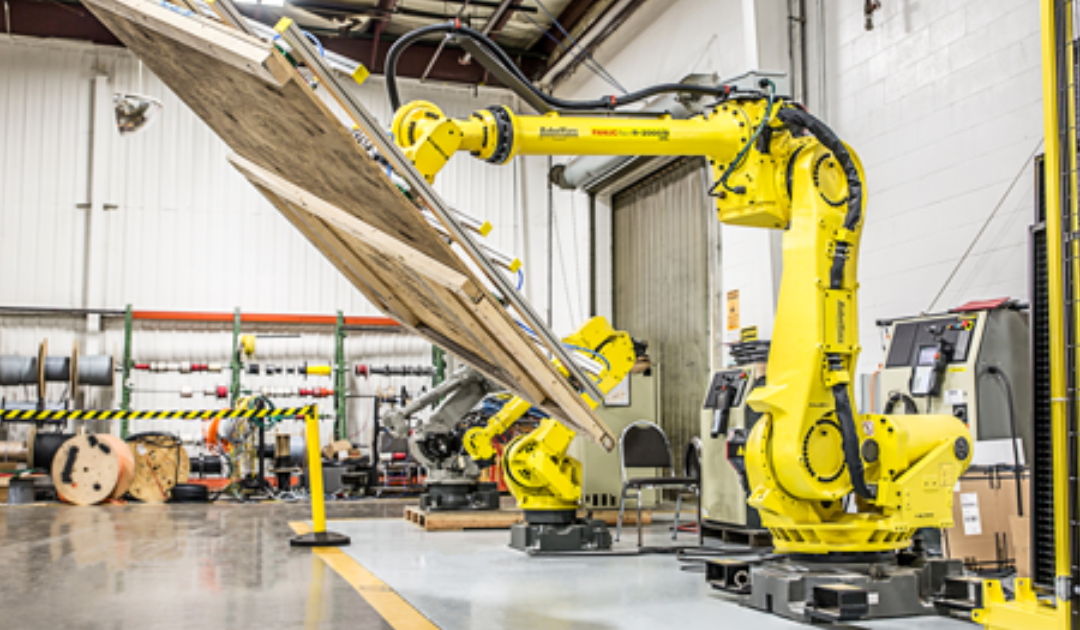In the material handling industry, productivity is one of the prime requirements in order to keep up with demand. At the same time, it’s essential that all processes are also cost-effective. In recent times, robotics has offered a solution to both these needs whilst also delivering several extra dimensions of assistance to the industry.
So just how deeply are robotics influencing the material handling industry?
Increase in productivity
With increasing demand being placed on the material handling industry for results to be delivered faster and cheaper while employing significantly fewer supplies than in the past, the use of robotics to help the industry keep up with demand has almost become an inevitability. Process automation is renowned for being more reliable and faster than traditional methods, and also requires fewer resources.
Factors such as reduced delivery times, for example, have become a linchpin of warehouse operations and a robot machine can deliver that en mass, whereas a human picker cannot meet those demands. In recent years, there has been an extreme change in logistics applications, leading to a significantly more immersive process for robotics use within material handling.
According to Statista, a significant majority of global consumers are prioritising fast delivery, indicating that demand for products with a reduced turnaround time is only likely to increase. The use of robotic process automation has proved an excellent way to facilitate this demand.
Limitless working time
Unlike human workers, robots are not limited to single shift patterns. An AI robot can be operational 24 hours a day, seven days a week, if necessary. Due to this, there is likely to be more uptime, thanks to the use of an industrial robot in place of a human, which will enhance productivity levels even further and consequently boost revenue too.
Consumers are increasingly demanding their products within a shorter time and the viability of mobile app-based e-commerce is resulting in orders being placed around the clock. The extra dimension of an industrial robot within the process is allowing for these stringent demands to be met. With so many companies eager to meet the demands and avoid customer disappointment, robots within the material handling industry have allowed them to surpass expectations.
Reduction in staff-related costs
One of the big expenditures for companies is training their staff, especially if new staff have little or no experience in the industry or if they are unskilled workers. Robots, on the other hand, can be easily programmed to do the job and do not require intensive training programmes in order to function efficiently. This means that higher levels of automation can be much more cost-effective than solely relying on a human workforce to do the job.
Staff recruitment programmes are also very expensive and because of the reliability of a robot machine, there is lower staff turnover. Robots simply don’t apply to new jobs and leave the company. Again, this allows any business to have confidence that there will be a financial saving when robotics engineering is implemented within their business.
Easier to log data
One major advantage of robotics over humans is that robots can automatically log order data or picking data without the scope for human error. This robotic process automation gives enhanced transparency to companies about exactly what is being picked, and the time it is taking to do so, subsequently innovating production lines and giving greater flexibility throughout the process.
Increased efficiency for route following
It is extremely important for robots, especially when they are used in roles such as warehouse picking, to be able to follow a planned route, self-locate and navigate around the facility with minimal requirement for human interference. This allows for seamless integration into current business processes and minimises the scope for costly errors.
As robotics engineering has become more advanced, these AI robots are able to accurately navigate a route and thus deliver the service efficiently, cost-effectively, and within less time compared to their human counterparts.
What does the future hold for the material handling industry?
Trends towards more demanding consumer needs are likely to continue and awareness of the benefits that robotic process automation can bring will likely result in a further increase in the use of robots within the material handling industry.
Already, there are several ways that companies can employ the use of an industrial robot to facilitate increased demand from clients, such as (https://www.shshandlingsolutions.com/combined-categories/stackers/) electric pallet stackers to ensure all their products are placed correctly and ready to be picked. There are also excellent quality automated order pickers to help retrieve products from the shelves more quickly and reliably and meet consumer demand.
With robotics bringing such a plethora of benefits to the material handling industry and commerce, it looks like inextricable links have formed between these industries now, meaning that there will be even greater convergence in the coming future, with a greater dominance by robots in industry.
For a wide range of exciting material handling products, contact SHS Handling Solutions.

